Everyone knows that physical exercises help to maintain health and cope with many ailments. However, few people know that simple exercises are an excellent self-diagnosis, allowing you to recognize the disease in time and seek professional help.
Neurosurgeon, candidate of medical sciences, author of isometric gymnastics and bestsellers on health improvement Igor BORSCHENKO offers to undergo a small test that will reveal inflammation of the spine and joints.
Joint stiffness indicates osteochondrosis and inflammation of the spine

Cervical osteochondrosis — a serious illness. It does not allow you to turn your head painlessly and can work the heart. Therefore, it is best to recognize it in time.
How to do it? Standing at the mirror. This will help control the required level.
- Bend your head and touch your chest with your chin.
- Turn your head to the side so that your nose is parallel to your shoulder.
- Fix the level of the nose with your finger.
- Throw your head up.
What is he talking about? Normally, the chin should rise to the level of the nose.
Poor neck flexion indicates the following conditions:
- osteochondrosis;
- rheumatism;
- arthrosis;
- herniated disc.
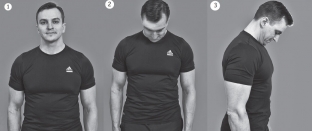

Ininflammation of the spine can knock a person off their feet in the truest sense of the word. This term also hides spondylitis, which leads to the destruction of the vertebrae, and osteomyelitis, and even Bechterew's disease. Since all of them are united by a destructive effect on the joints, it is periodically worth doing such a diagnosis using isotemetric gymnastics.
How to do it?
- Feet shoulder-width apart. Feel with your fingers on the lower back bone protrusions (spinous processes of the vertebrae).
- Put the second and third fingers on them and slowly tilt.
What is he talking about? Normally, during the tilt, the spinous processes should move apart, and the distance between the fingers will increase.
- Restricted movement of the spinous processes indicates inflammation of the spine and requires a consultation with a rheumatologist.
Crunch in the knees indicate arthrosis, and pain — for cartilage aging
Osteoarthritis of the hip overtakes both men and women after 40 years. Painful with every step, it can cause lameness by shortening the affected leg.
How to do it?
- Lying on your back, bend your leg at the knee.
- Place the heel of the bent leg on opposite knee and lower it to the side.
What is he talking about? Normally, the knee should drop horizontally.
- The difficulty of performing such a movement indicates the development of arthrosis.
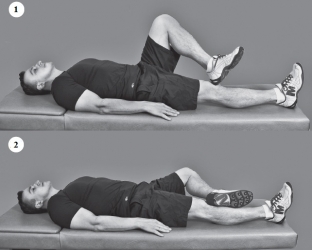
Aging cartilage leads to deformity of the joints.
Factors causing cartilage aging:
- age;
- excessive physical activity;
- overweight;
- Sedentary lifestyle.
How to do it? Slowly squat, bending your knees halfway.
What is he talking about? If the movement is silent and painless, the knees are fine.
- Squeaking while squatting is due to a degenerative lesion resulting from arthrosis.
- Painful squeaks — reflection of cartilage aging. Immediate treatment required.
Epicondylitis: studying the swimmer's syndrome and getting out of the risk group
The true cause of epicondylitis — inflammatory disease of the elbow joint — doctors can't tell. However, we are sure that most often this ailment affects those who have to perform monotonous actions with their hands. At risk — carpenters, masseurs, swimmers, musicians.
How to do it?
- Hold any object firmly in your hand.
- Bend your arm at elbow at a right angle.
- Turn the bent arm upside down.
- Back side press on the second hand, preventing extension in the wrist joint.
- Turn your hand palm up.
- Press with the palm of the other hand, preventing the bend in the wrist joint.
What is he talking about?
- Pain in the area of the elbow joint indicates its inflammation ("tennis elbow").
- Pain in the hand betrays internal epicondylitis ("swimmer's elbow").
Treatment takes several months.
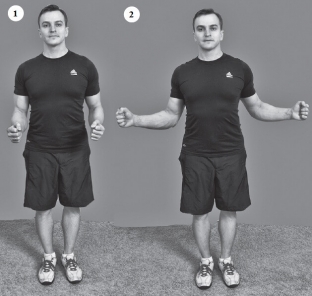
Carpal tunnel syndrome can be called one of the markers of our times. It threatens first of all those who have to & nbsp; work at computer. But most often it overtakes women: their carpal tunnel is narrower than that of men. Although the syndrome does not pose a particular threat to health, it can lead to immobilization of the hand.
How to do it?
- Combine the backs of the hands.
- Place in front of the chest so that each forearm forms a right angle with the hand, and the fingers are pointing down
- Lightly press the brushes against each other.
- Hold in this position for 1 min.
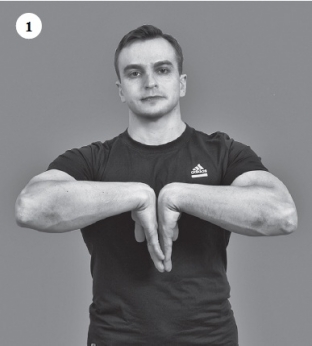
What is he talking about? Normally, the exercise is easy to perform.
Numbness, pain, tingling, crawling sensation in the hands indicate carpal tunnel syndrome. It is treated both conservatively and surgically.






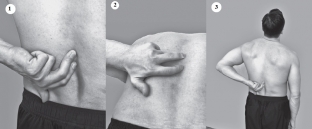
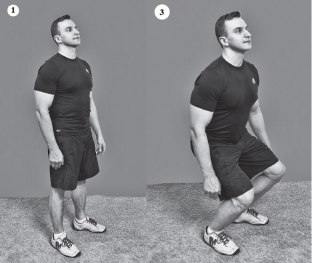
Add a comment